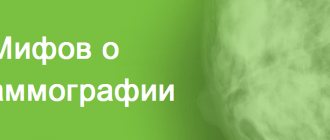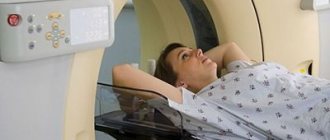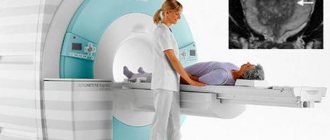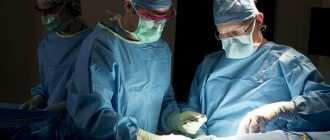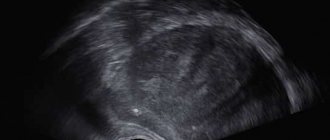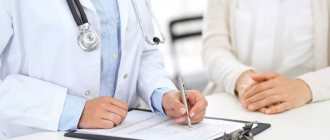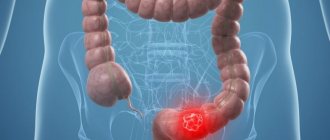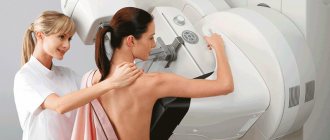Indications and contraindications for breast puncture
Prescribing a puncture by a doctor has strict indications. These include:
- Palpable/non-palpable nodules;
- Cysts and galactoceles detected by palpation and ultrasound.
- Swelling and hyperemia of the skin over the pathological focus;
Unlike instrumental research methods, puncture allows one to study the cellular and tissue composition of a pathological formation and confirm its benign or malignant nature.
Aspiration biopsy is not recommended in the following cases:
- Pregnancy;
- Lactation period;
- Before and during menstruation;
- For severe blood clotting disorders;
- For allergic reactions to anesthetic agents.
Who is prescribed
A biopsy is a medical procedure in which samples of cells are removed from the breast for study. Often the purpose of such an analysis is to determine the nature of the tumor. A biopsy is performed when other research methods have failed.
It is recommended to prescribe a biopsy procedure only in certain cases. Before it is carried out, a mammogram or ultrasound is already performed for diagnostic purposes. The presence of lumps in the mammary gland, their number, size, and location are determined. Further use of a biopsy may reveal a cyst, fibroadenoma, or oncological tissue degeneration.
Indications for prescribing a biopsy are:
- change in the shape, position of the nipples, formation of crusts on them, retractions, change in color;
- compaction detection;
- discharge of fluid from the nipples, especially with blood and pus;
- change in the shape and size of the breast;
- some diseases - mastitis, cysts, mastopathy, fibroadenoma;
- the appearance of redness on the skin and other skin disorders.
If a multifocal tumor is detected, a breast biopsy will be performed from two lumps.
The psychological side of the procedure is important. The doctor must tell the woman about the purpose of the study and the need for it. Lack of information creates fear and depression, which only worsen the disease. According to medical statistics, in 80% of women the biopsy gives a negative result, that is, oncology is not confirmed.
Possible contraindications
There are limitations to this manipulation. You cannot undergo a biopsy for diseases and conditions such as:
- pregnancy, breastfeeding;
- presence of a pacemaker;
- individual intolerance to anesthetics;
- increased body temperature;
- menstruation;
- increased seal size (more than 5 mm);
- acute infectious diseases;
- severe pain in the back, neck, shoulders of various origins;
- there are blood clotting disorders.
A contraindication is also the inability of a woman to remain still during a biopsy. The examination lasts approximately 1 hour, during which time you need to lie still.
Types of biopsy techniques
When choosing a biopsy method, the specialist will take into account the results of other examinations and symptoms. There are needle and surgical types of biopsy depending on the method of tissue sampling. Needlework is performed with a variety of tools. Their description is presented in the table.
| Name of needle examination methods | Description |
| Fine needle | It is used when examining formations that can only be palpated. A thin needle with a syringe is inserted into the suspected affected area. Tissue samples are retracted. This percutaneous method can detect a cyst with fluid, a tumor. |
| thick needle | This examination uses thick needles with cutting devices. A special device allows you to automatically dive into the tumor and return. This helps to select a large amount of biomaterial and obtain accurate results. |
| Stereotactic | X-rays are used to guide the needle. A mammogram is performed to accurately determine the area where the lump is located. Next, an incision of up to 7 mm is made, through which several tissue samples are taken. Used to examine deep seals. Pain relief is required. |
| Core biopsy (Core biopsy) | It is produced by a device – a gun with a needle. A column of material as high as the size of the tumor is taken from the seal. No anesthesia required. The method does not leave bruises on the skin, and no stitches are required. |
| Vacuum | It is used under ultrasound control, with local anesthesia. Can be used to remove small tumors. |
Surgical biopsy methods require mandatory anesthesia and suturing. In this case, an incisional method is used, when part of the diseased organ is removed during examination. The excision method involves excision of the tumor, only then taking biological tissue samples.
Surgical methods include trephine examination. It is performed when the surgeon opens the mammary gland, providing access to the tumor. Tissue samples may be taken and cystic lumps may be removed. The manipulations are painful and therefore require general anesthesia.
Advantages
Ultrasound-guided biopsy, unlike other diagnostic methods, is more informative. It is on the basis of this study that further treatment is prescribed. Only a biopsy can exclude or confirm the presence of a malignant tumor, as well as make a treatment prognosis. The procedure itself is safe: there is no radiation. Carrying out the manipulation under ultrasound control eliminates the possibility of cystic fluid or blood getting into the research material, which increases the information content of the study.
Preparation before the event
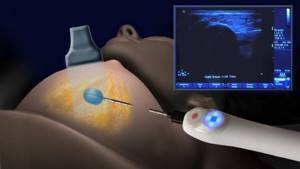
In order for the biopsy to give an accurate result, and the treatment to have a positive effect, you need to properly prepare for it. The patient must inform the specialist about the presence of chronic diseases and constant use of any medications. To avoid complications, you need to follow simple preparation rules:
- 3 days before the examination, you should stop taking anticoagulants (blood thinners).
- Do not drink alcoholic beverages the day before.
- Do not smoke on the day of the biopsy.
- Warn the doctor about contraindications - the presence of a pacemaker, possible pregnancy, allergic reactions to medications.
- Come to the procedure with an accompanying person who will wait and then take you home.
On the day of the biopsy procedure, it is recommended to wear light clothing, remove glasses, jewelry, dentures, and not use deodorants or cosmetics. If the examination is causing you anxiety, it is best to take a sedative before the procedure. The calm state of the patient will enable the doctor to carry out the manipulation more accurately.
How is a breast biopsy performed?
Medical manipulation is carried out under sterile conditions. Before the procedure begins, the patient’s blood is tested for clotting. The patient will lie on her stomach or back, depending on the type of examination. The mammary gland will be in its normal position or clamped in a special device.
The puncture site is treated with an antiseptic. To prevent pain, a special gel is applied. In some cases, anesthesia is used.
Then a needle is inserted into the seal. During this time, it is strictly forbidden to move. How long this will last depends on many circumstances, and only a doctor can say this. On average, cell collection takes place quickly; based on reviews, one cannot say that it is very unpleasant.
At the end of the manipulation, the puncture site is treated, and if there is bleeding, a cold compress is applied. You can hold it for 10 minutes, then take a break. This way you can avoid inflammation in the chest.
After the bleeding has stopped and the patient’s condition has normalized, a bandage is applied and she is sent home. Presence in the hospital is necessary if the mammary gland begins to become inflamed.
What should you expect during and after the study?
During the examination, the patient is conscious and experiences little or no discomfort. Most women report that the examination was painless or virtually painless, and there was no scarring of the breast skin after the biopsy.
When a local anesthetic is injected to numb the skin, the patient feels a slight prick from the needle. There is a feeling of slight pressure as the biopsy needle is inserted.
The skin remains numb for some time after completion of the study. During the entire examination, you must lie as still as possible. While the tissue sample is being taken, you may hear the tapping or clanking of surgical instruments.
If swelling or bruising occurs after the biopsy, a cold compress (ice pack) and mild pain relievers should be used. Temporary subcutaneous bleeding is normal.
You should contact your doctor if you notice significant swelling, bleeding, or other discharge from the biopsy site, redness, or local warmth in the breast.
The mark left by the doctor to determine the location of the pathologically changed area does not cause pain, changes in the shape of the breast, or other harm.
During the day after the study, you should not engage in intense physical activity, but usual activities are usually allowed.
Up
Decoding the results obtained
Studying tissue in the laboratory takes time, in some cases up to several days. The duration of preparation depends on the complexity of the samples being studied. Specialists conduct a macroscopic analysis and give an opinion on the nature of the compaction. The transcript will provide data on the size of the compaction, location, and identification of oncological changes in tissue.
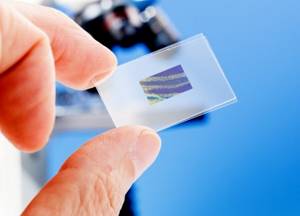
The results are usually deciphered into groups:
- normal – no cancer cells;
- incomplete - indicators differ from the norm, re-checking is required;
- non-cancerous – there are abnormal cells, other diseases are diagnosed;
- malignant – atypical cells detected, location and size determined;
- benign - cells with chaotic division have been identified, but they differ from cancerous ones.
- Based on the results of decoding, further treatment is determined.
The consequences after the procedure are minimal. Side effects are rare. The procedure can be prescribed by a doctor if a woman herself comes with a request for an examination if there is a suspicion of lumps in the breast.
A breast biopsy is necessary when lumps of unknown origin appear. This will save you from serious problems.
The cost depends on the type of biopsy. The procedure cannot be cheap, since the manipulation involves complex equipment. In Moscow, the average price is 5,000 rubles. The main thing is to do this procedure in a timely manner. The timing of the biopsy is important for further success in treatment.
What information can you get?
The resulting tissue sample is sent to the laboratory for histological examination. The material is first fixed, placed in paraffin blocks, cut and placed on a glass slide. After staining, a pathologist examines the glass under a microscope and determines the type of tumor, the degree of its differentiation and growth characteristics.
A biopsy allows not only to diagnose diseases of a tumor nature, but also to select the correct treatment. To do this, the material is sent for FISH or immunohistochemical study. For example, the drug Trastuzumab from the group of monoclonal antibodies is used in targeted therapy for breast cancer. However, it is effective only if overexpression of the HER-2/neu receptor is detected in the tumor tissue. This indicator can only be determined after a biopsy.


